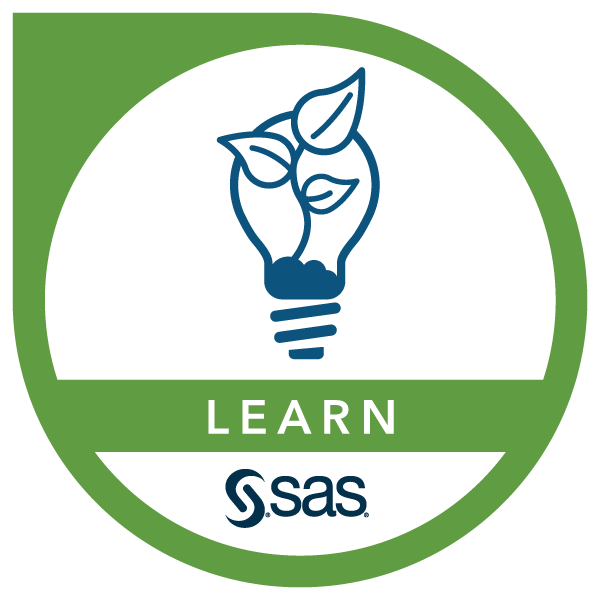SAS Advanced Regression Learning Subscription
| Purchase this digital subscription to: | |
| Digital courses Unlimited access to digital courses and books in this subscription. |
|
| Prepare for certification Unlimited access to certification preparation materials. |
|
| Shareable digital badges Earn a digital badge for each completed course. |
|
| Hands-on learning and practice Get Full access to SAS software to practice as you learn. |
|
About this Subscription
Join us to learn advanced regression techniques for continuous or count data outcomes, multilevel data patterns, and more. You’ll learn which technique to use when.
Learn how to:
Before taking these courses, it is recommended that you take the SAS Programming 1: Essentials and Statistics 1: Introduction to ANOVA, Regression, and Logistic Regression courses, which are available in instructor-led or free online e-learning formats. The Statistics 2: ANOVA and Regression course or equivalent knowledge is also helpful.
Courses Included
Level 1
-
COURSE
Fitting Poisson Regression Models Using the GENMOD Procedure SHOW LESS ︿This course is for those who analyze the number of occurrences of an event or the rate of occurrence of an event as a function of some predictor variables. For example, the rate of insurance claims, colony counts for bacteria or viruses, the number of equipment failures, and the incidence of disease can be modeled using Poisson regression models.
This course includes practice data and exercises.
ENROLL -
COURSE
Multilevel Modeling of Hierarchical and Longitudinal Data Using SAS® SHOW LESS ︿This course teaches how to identify complex and dynamic patterns within multilevel data to inform a variety of decision-making needs. The course provides a conceptual understanding of multilevel linear models (MLM) and multilevel generalized linear models (MGLM) and their appropriate use in a variety of settings.
The self-study e-learning includes:- Annotatable course notes in PDF format.
- Virtual lab time to practice.
ENROLL
Level 2
-
COURSE
Statistical Analysis with the GLIMMIX Procedure SHOW LESS ︿This course focuses on the GLIMMIX procedure, a procedure for fitting generalized linear mixed models.
ENROLL -
COURSE
Robust Regression Techniques in SAS/STAT® SHOW LESS ︿This course is designed for analysts, statisticians, modelers, and other professionals who have experience and knowledge in regression analysis and who want to learn available procedures in SAS/STAT software for robust regression. The two procedures addressed in the course are the ROBUSTREG procedure and the QUANTREG procedure.
This course includes practice data.
ENROLL -
COURSE
Structural Equation Modeling Using SAS® SHOW LESS ︿This course introduces the experienced statistical analyst to structural equation modeling (SEM) in the CALIS procedure in SAS/STAT software. The course also introduces the PATHDIAGRAM statement in the CALIS procedure, which draws path diagrams based on fitted models.
Structural equation modeling is a statistical technique that combines elements of traditional multivariate models, such as regression analysis, factor analysis, and simultaneous equation modeling. These models are often represented as matrices, equations, and/or path diagrams and can explicitly account for uncertainty in observed variables and for estimation bias due to measurement error. Competing models can be compared to one another, providing information about the complex drivers of the outcome variables of interest. Many applications of SEM can be found in the social, economic, and behavioral sciences, where measurement error and uncertain causal conditions are commonly encountered. This course does not address models containing categorical endogenous variables or multilevel SEM, as these methods are not supported in the CALIS procedure.
ENROLL
SAS Products Covered
- SAS/STAT
Digital Badges
Earn a digital badge for each course that you complete and for each credential that you earn. Show off your achievements on your resume and in your social channels to highlight your skills and connect with potential employers. |
 |
Certification Preparation
This learning subscription is not currently associated with a SAS credential.

“I think the self-paced training was the BEST I’ve ever taken. The videos were short and segmented correctly to keep my attention and the activities and quizzes were just enough to help my confidence.”